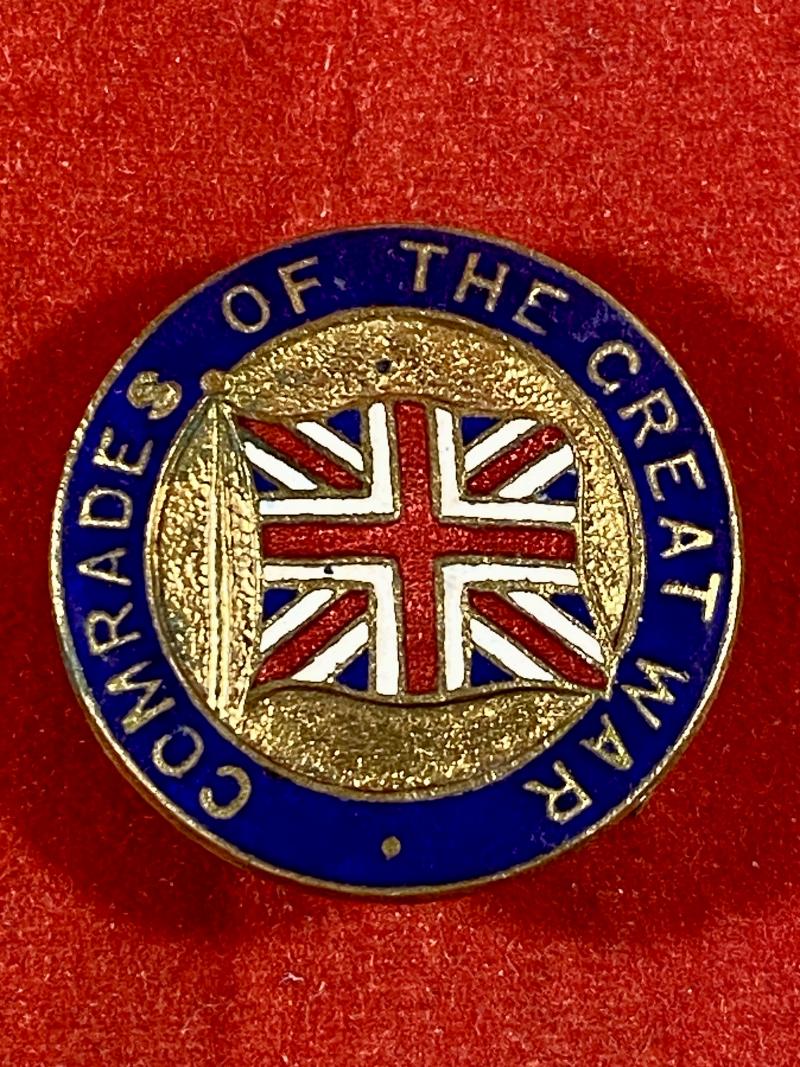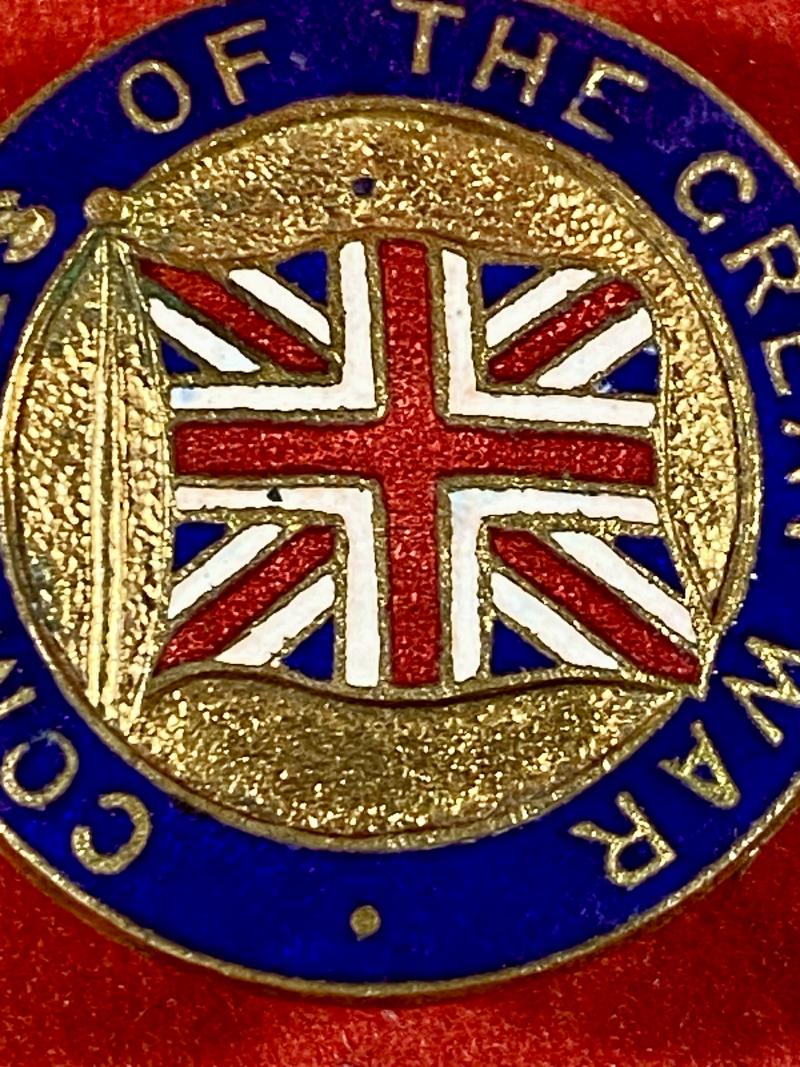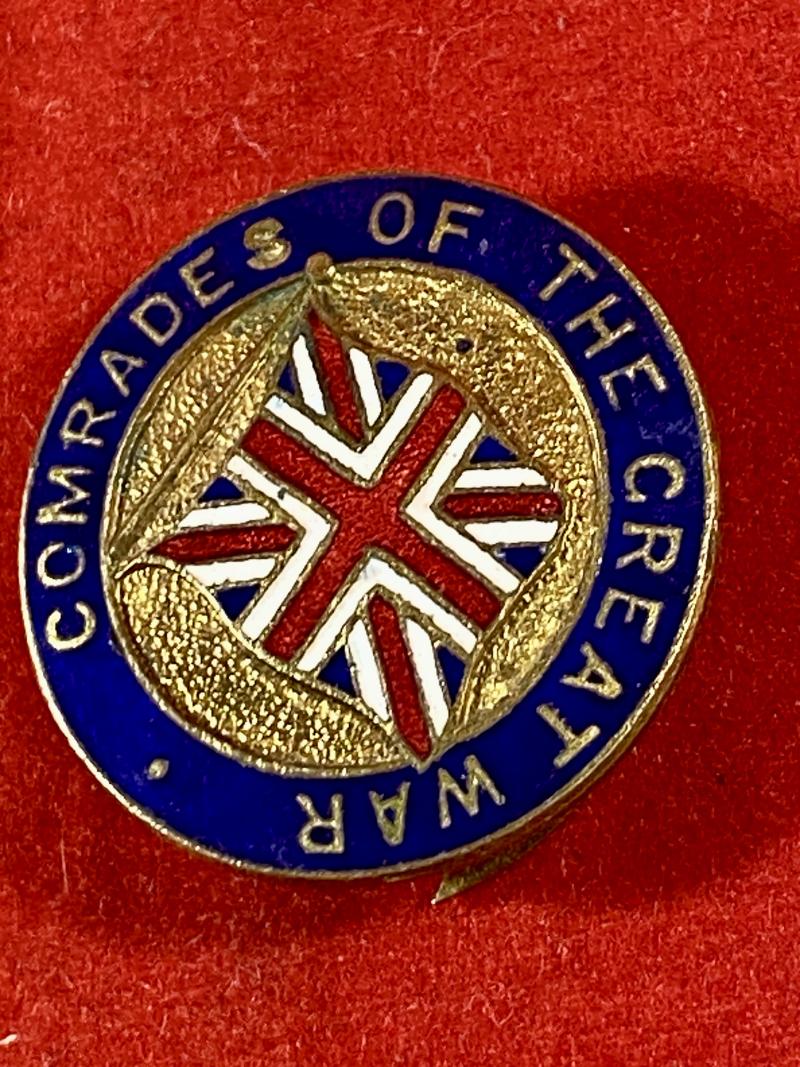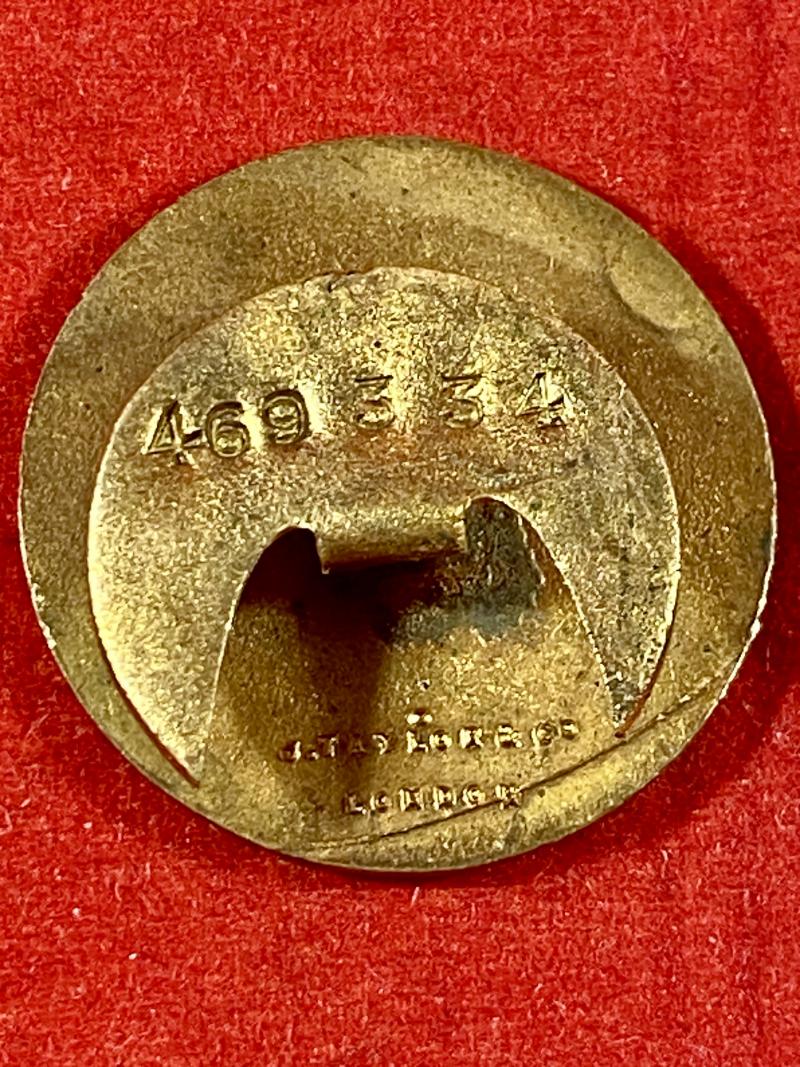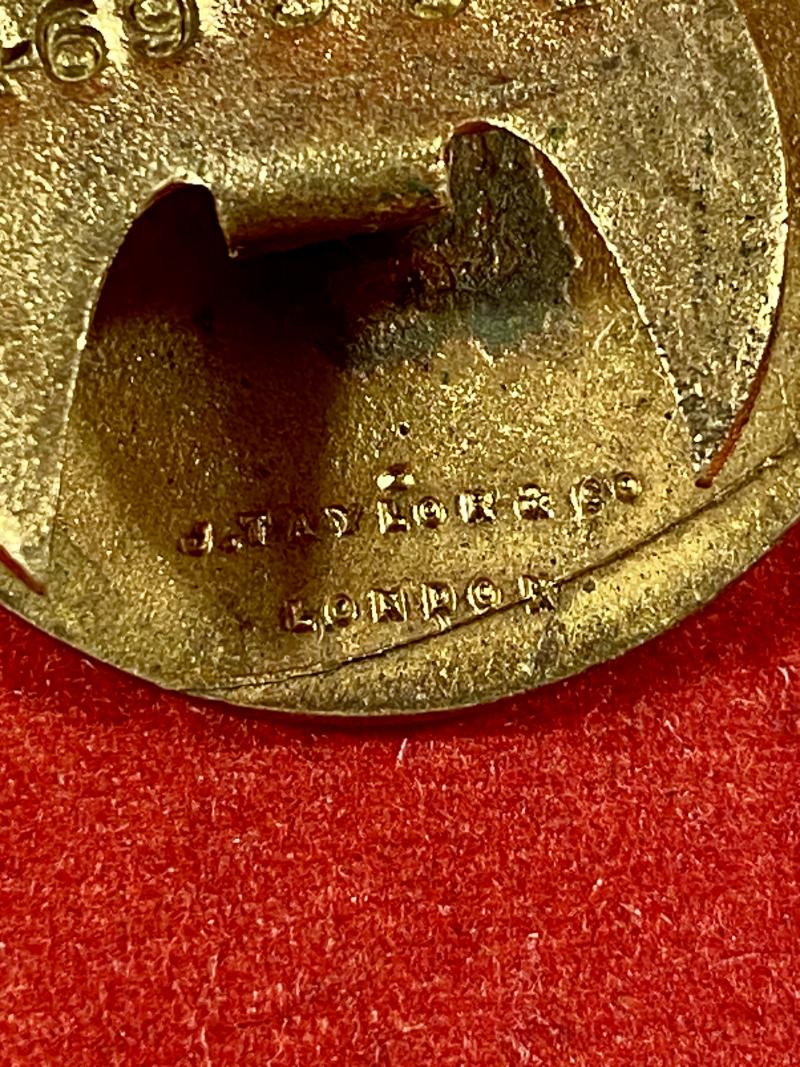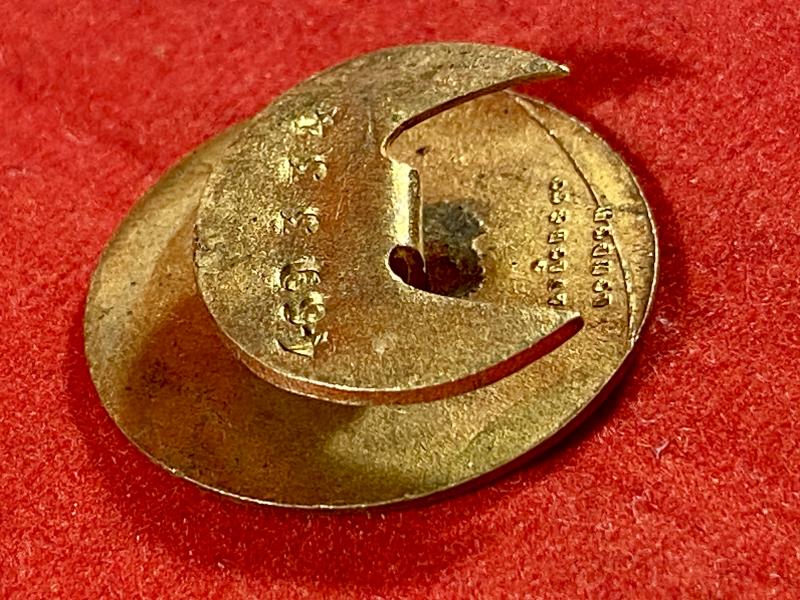WW1 Comrades of the Great War Gilt Brass & Enamel Buttonhole Badge by J. Taylor & Co. London – No. 469334
Here on offer is a genuine WW1 “Comrades of the Great War” gilt brass and enamel buttonhole badge by J. Taylor & Co., London.
On the front it displays a coloured enamel Union Jack flag in the centre and the words: Comrades of the Great War around the edge.
On the reverse, it is stamped with the members number 469334.
It also has the maker’s details in raised letters and this example was made by the less common maker, J. Taylor & Co., London.
It measures 1” (2.5cm) diameter and weighs 6.5g.
History of the “Comrades of the Great War” association.
As the First World War drew to a close, and in the weeks and months after the Armistice, a number of veterans’ associations were formed throughout the UK. In many ways, this was a result of the social revolution that the war had created. These organisations, an important platform for former service personnel to remember lost comrades, retained a degree of camaraderie and discussed the post-war issues veterans faced as well as forming an influential social movement in their own right. One of these organisations was the Comrades of the Great War.
Formed in 1917, the organisation was the idea of a number of individuals, not least of whom were the Conservative MP Lieutenant Colonel Sir John Norton-Griffiths and Lord Derby, then Secretary of State for War. However, a predominance of politicians and officers on the national committee in the early stages was a deterrent to many ex-servicemen and recruitment was initially poor. In an attempt to broaden the organisation’s appeal, Lord Derby appointed Captain E.B.B. Towse, VC, as chairman. Towse had been awarded the Victoria Cross for his actions at Magersfontein during the Second Boer War – an action during which he was blinded. His appointment proved to be an astute move and recruiting improved dramatically.
The first club founded by the Comrades of the Great War was the Surrey County branch and was opened on Saturday, 8 December 1917, at Addlestone, near Weybridge. A large residential property had been acquired and furnished by Major Gordon Watney (who also presented £5,000 to the headquarters fund) for the purposes of the Weybridge branch. The opening ceremony was performed by Lady Norton-Griffiths, and those present included General Sir Edward Hutton and Colonel Young.
A report on the club’s opening, published in The Times two days later, noted that ‘Sir John Norton-Griffiths said that the movement was due to an incident near Ypres in April, 1915, when on a dirty night officers and men were digging out twenty-two men who had been buried by a German shell. The spirit of comradeship there displayed led an officer and serjeant to declare their intention of founding an organization to perpetuate such a spirit of comradeship.
‘Captain Towse VC said there was no need to point out the meaning of comradeship to men who had faced death together in the trenches. If all those who had been ‘over the top’ together would cling together it would make for the good of the country.’ By this stage of the war, county organisations have already been established in Wiltshire, the North Riding of Yorkshire, Hampshire, Cheshire, Lancashire, Nottinghamshire, Derbyshire, Lincolnshire, Sussex, Essex, and Northamptonshire.
All members of Comrades of The Great War, which was a non-political and non-sectarian, were presented with a membership certificate and a badge. The organisation was one of the original four ex-service associations that amalgamated on Sunday, 15 May 1921, to form The British Legion.
Please see my pictures for the details of the condition, which complement this description.
Please see my pictures for the details of the condition, which complement this description.
Please see my TERMS OF BUSINESS regarding Deliver Charges and Insurance regarding additional insurance cover, should you require it, BEFORE the item is dispatched.
The responsibility lies with the customer to check with your Customs restrictions that this item can be imported into your country.
Many thanks for taking the time to look.
Code: 51179
12.00 GBP

